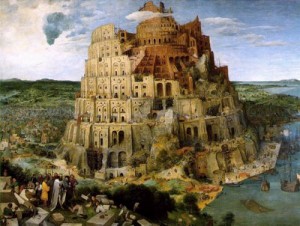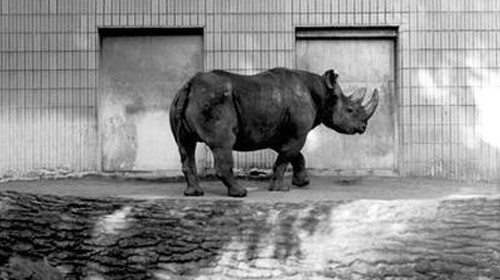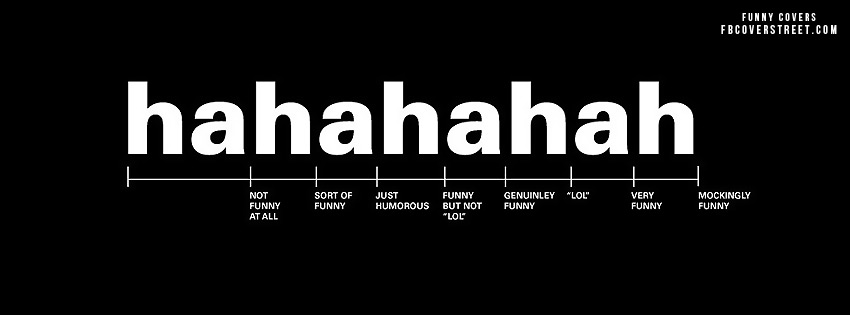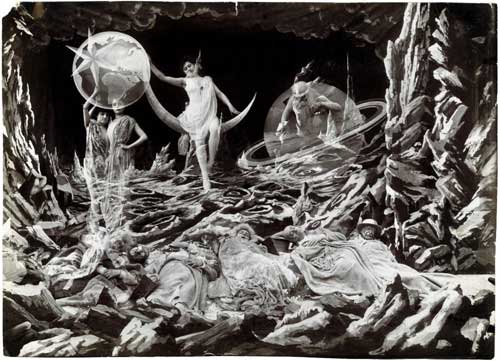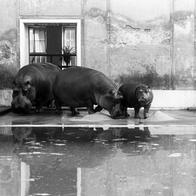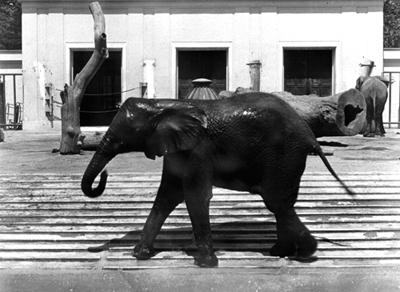
Karl Kels at Cinematheque Ontario (Toronto, Canada)
March 1, 2006
“For more than two decades, German filmmaker Karl Kels has produced a series of unique and uncompromising films that explore the interactions between animals (including people), the spaces they inhabit, and the temporality of film. A former student of Peter Kubelka and Robert Breer, Kels works to exacting standards, which led him to build his own laboratory to process his films. Employing a highly restricted working method–fixed camera positions, no sound, unstaged subject matter–Kels explores the fictionalization of time in cinema, and the tensions between documentary footage and plastic editing. Kels’s subjects range from haystacks in a field to hippopotamuses in a zoo or alcoholics on the streets of New York, but his sensibility is consistent, often humorous, and always refreshing.” (Chris Gehman, Ontario Cinematheque Guide)
Karl Kels: First I want to thank Chris for inviting me to the Cinematheque and Doina at the Goethe Institute for making this screening possible. I don’t want to say too much before you see my films. There are some general aspects I wanted to mention and the first one is that my films stand for film as a free art form. Art is, in my opinion, always concentrating on the essential subject matter and the formal aspect. Everything that is not essential is left out. I’m telling you this because the films are all silent and often I have experiences with audiences who ask, “Why are the films silent?” This makes me feel pity for the audience. I wonder if they have understood anything? Is this the only question they have after seeing my films? Just because you have technical possibilities there is no necessity to use them. Art means leaving behind everything which is not necessary.
Today I was with Chris Gehman in the Art Gallery of Ontario and we saw a painting by Peter Brueghel the younger. Peter Bruegehel the older is actually my favourite painter. They have a small Peter Brueghel the younger, which is still in its original Dutch frame. The frame is black and occupies more space than the painting. The frame says again and again: this is the border, this is the outside, the picture is of no interest, what belongs to the frame is the most important point.
The films you’re seeing have been made over fourteen years. Enjoy.
The following films are shown: Haystacks, Condensation Trail, Sluice, Bowery/Fragment, Rhinoceroses and Starlings. All film descriptions are from “The Films of Karl Kels” by Miryam van Lier, originally published in the catalogue of the Visions du Réel Festival in Nyon, Switzerland on the occasion of a Kels retrospective. These notes were republished in Millennium Film Journal 30/31 (Fall 1997).)
Haystacks
Director: Karl Kels West Germany 1981 2 minutes 16mm
Karl Kels’ first film is a playful short piece comprised of shots of haystacks in the countryside. Quick repetitions of frames and the dance-like rhythm in which the frames are combined create an illusion of movement within the single shot in which no actual movement takes place, save for one passing car. The combination of different images in short sequences forces a new reality upon the haystacks, making them move in every possible direction. Short as it is, this debut already puts its finger upon some of the characteristics that have remained of great importance throughout Kels’ entire work so far: the inseparable world of the single frame and time as an artistic controlling device.
Condensation Trail
Director: Karl Kels West Germany 1982 3.5 minutes 16mm
Flashes of changing color (a result of the celluloid being slightly exposed during the changing of reels), mark the first movements of a plane’s steady climb into the blue sky, leaving a condensation trail behind. This 22-second long shot is combined with black and white film, in which diagonal lines and parts of the image are cut out. Rhythm and repetition are essential; the lines in the two different types of film meet and part, merge and break up. The celluloid, though highly sensitive and fragile, displays a strong resistance when it comes to having parts of it cut out, a resistance reminiscent of the human emotions of anger and excitement, as the interplay between the black and white and the color parts shows an effective stubbornness. Though these effects may be highly controlled by the director, at the heart of Condensation Trail is an event which is unique and unstaged, and which is unlikely to ever repeat itself. The plane crosses the screen from the lower left to the upper right corner. Halfway on its journey, a bird flies into the frame and crosses the plane’s condensation trail exactly at its very end, making a perfectly sharp diagonal as it slowly reaches for its lower right corner. Within the hasty and fragmented reality of the film, the bird’s appearance suddenly displays a spacious and endless quality.
Sluice
Director: Karl Kels West Germany 1983 5 minutes 16mm
Six images of water are brought together in a composition in which rhythmical combinations of frames, presented in repetitive but slightly varying sequences, build up a silent yet dramatically developing performance. The individual images of water, either standing still, falling down, or collecting in the lower part of the sluice, are broken into small segments as if they were the founding notes of a piece of modern music. Again, qualities of time and movement prevail in the creation of a highly sensual cinema in which logic is replaced by a new order.
Bowery/Fragment
Director: Karl Kels West Germany 1987 7 minutes 16mm
In 1986 Kels received a fellowship that allowed him to study at Cooper Union in New York. During his stay there, Kels spent some six months in the Bowery in lower Manhattan. He began hanging out with the less fortunate who eke out an existence in cheap hotels or on the street, and became friendly with many of them. In the lives of the mostly male alcoholics who survive on open comradery and cheap alcohol, he discovered a rich unstaged world, which he slowly started to film. Bowery/Fragment is but a short fragment of what a final film on this subject could offer, yet it stands by itself and clearly bears the director’s marks. Against the background of a run-down Prince Hotel we see men who pass time together, deliberately portrayed by Kels’ clear eye for framing and detail, and yet whose acts and movements cannot be controlled.
Rhinoceroses
Director: Karl Kels West Germany 1987 9 minutes 16mm
It is at the end of this film that the rhinoceroses occupy center stage and perform mundane activities such as moving from left to right within their zoo pens. And it is right at the end of this that these archaic beasts will slowly and imperturbably cross the threshold of their cage, the door of which will have slid open mechanically. At that moment, gestures attain their intrinsic timelessness, with the camera recording what takes place in front of it in real time. This relative calm for the spectator (nothing is more peaceful than a rhinoceros in its everyday life) contrasts in a spectacular way with the previous frantic minutes. As his work is based upon using time freely, the filmmaker has done his utmost to organize sequences of images according to an acceleration which is external to the animals in the zoo, but coherent within the process of cinematographic creation. Playing with two spaces in which they are enclosed (one equipped at the back with a door which lifts open vertically, the other with two side doors which slide open horizontally), Karl Kels makes the spectator laugh by giving the film aspects of the burlesque and absurd. He makes staccato shots, edits in close sequence, and animates the rhinoceroses much as an animation filmmaker would do using pixilation. In pure fiction that is only possible thanks to the cinema, these rhinoceroses and their setting are literally exhausted by the playful manipulations of the filmmaker before once again finding, in our company, the sort of peacefulness they need to leave the stage.
Starlings
Director: Karl Kels Germany 1991 6 minutes 16mm
It is night. The moon is shining. A static camera captures a huge flock of starlings searching the sky in circular movements. It is not clear how long Kels had been standing there before he turned on his camera; the event as such can only have come as a surprise to him as well. At first the starlings are hard to identify. Having deliberately edited frames coming from different generations of the original print in a certain metrical order, without changing the actual chronology of their movement, Kels has the constantly changing shapes of the birds dissolve in the rough grain of the celluloid. Once again a technical weakness of the celluloid forms the starting point of his visual enterprise. Shot on one reel without any interruption, the birds’ flight gradually forms configurations of astonishing beauty. An immense sense of depth emerges as the starlings move against the background of the distanced moon, yet cross close by electric wires. Moths cannot resist the light and drop down just in front of the lens, and finally, also the starlings seem to take a last turn reaching down closer to Kels’ camera just before his reel ends.
Hippopotamuses
Director: Karl Kels Germany 1993 35 minutes 35mm
It is a question of order or disorder, cleanliness or dirtiness. The main protagonists are hippopotamuses (a male, a female and a baby—a family?) and two painters and keepers in charge of renovating and cleaning their pen. There are two backgrounds to this scene. One wall closes off the space the zoo has allotted to these animals, but two doors that slide open sideways open into another space, a deep space, the cage no doubt, inside the building that shelters the animals. Another setting is perceptible at times, that of water in which the wall, the doors and the hippopotamuses are reflected. This film confronts the spectator with a double challenge. On the one hand, a subtle interlacing of rhythms which simultaneously reveal the movements of these majestic and indolent animals, a purely cinematographic work using editing in order to organize a different time-frame. On the other hand, the scenes filmed from the front and in a fixed position rely on the absolute indifference these hippopotamuses show towards Karl Kels. This set-up, fleshed out by purely visual matter (blacks and whites, shades, reflections), is a brilliant questioning of the vision of the spectator who is invited to look closely: a sort of primitive scene in which the eye is stimulated and provoked by a non-spectacle built up into a cinematographic event. This holds right up until the last shot of a little black bird which flies away, free of any cinematic hold.
Karl Kels: Each film has its own subject matter and its own form. Each film stands for another idea. But from where do the ideas come? I’m not illustrating literature for instance. What I’m doing in general is observing the world, and when something is interesting for me I start to film. With the material I make I start to think. In some films I was already satisfied with one shot, like in the Starlings, while in others like Rhinoceroses or Hippopotamuses I returned to the same spot over and over again in order to collect more material. This accumulation always occurs within the same frame, the same view.
You could think of how paintings are realized. As a painter you begin with a white piece of canvas which enforces a framing. Inside this frame you use a brush, each stroke has its effect, and all successive strokes are a reaction to what’s happened before. Suddenly a dialogue starts, you can see it vividly in the late paintings of Van Gogh which were sometimes made in one day. You see the incredible intensity of his strokes and the way they react to one another. Film is certainly something completely different than painting. But because I always return to the same spot, recording new material using the same framing, I’m building up a kind of vocabulary. Let’s call it a vocabulary. And while doing so I certainly remember what I have already filmed, so the new shooting is also a response. This process of filming is very different than narrative filming, for instance, which comes from the written word. But I’m not interested in this. I’m interested to find something in the end that I couldn’t have imagined. I’m feeding my own curiosity.
I use the example of painting to describe the proceedings of some of my films. These ideas are particularly relevant to Rhinoceroses (1987), Elephants (2000) and Hippopotamuses (1993). In all three films the very first footage decisively influenced my continuation of the project. Everything which was filmed thereafter created a relationship with the material which was already processed and seen by myself. This mechanism can be called a response, which means that I somehow memorize my material when I am standing with the camera in front of, for example, the elephant house and wait for situations to come. The most intense moment is when I have to decide whether to switch the camera on. I try to anticipate what is going to happen, and want to start the filming before it does. Because I don’t train the animals this unpredictability is very risky, especially because of the expensive film material: four minutes of 35mm film cost about five hundred dollars. But I can use this financial pressure creatively, maybe because I am a little bit of a player. Standing there with a video camera which would allow me to tape an hour for a few dollars would bore me, it wouldn’t be such a thrill. But better not to ask how much film material I had to throw away.
In Rhinoceroses I began with the idea to film the animals walking into their mysterious enclosure over and over again. I did so maybe fifty times. I was still interested in the formal aspect of rhythm which my previous work exhibited, but I wanted to take the repetitions from nature, not to impose it on the footage. But after I made the first shootings I was bored. I tried to edit but it didn’t work so I put it away for two years. One afternoon I went back to the zoo by chance and the first thing I saw was that there was a new door. Suddenly the material I had filmed was history, it was no longer something I could film as many times as I wanted. From this moment I could go on and the next day I returned to the zoo with my camera.
In 1988 I showed this film to an American audience who refused to believe that these were the same doors. They couldn’t imagine someone so passionate that he would come back and shoot the same doors for four years. They thought I had filmed a front door and then a back door. But it is the identical door, the identical space, this is essential for the work. If it weren’t the same then this would be another film. And then what happens? Then they replaced the second door and suddenly you have two doors with one animal. So suddenly I have a drama without ever writing one word in a screenplay. This I love.
The film is sad but also contains humour. Tonight I heard laughter which I like very much. Laughter is the sound of people understanding.
MH: Do you feel you are constructing a phantom world, which you return to over and over again, always in the same way, which is superimposed onto the world that others might view casually?
Karl: I construct a highly artificial “world” which is still connected to reality because of the authentic character of the photographic image, but offers a condensation of time. In Elephants, a five year observation is condensed into a 62 minute film. And still there are people who are bored when they try to see this film. Many people have never visited this zoo, perhaps this lack is responsible for their boredom. I always had the idea to project the films in their original settings, but the zoo didn’t co-operate.
Chris Gehman: I wanted to ask you about control and specifically about tableau film because you have essentially revived the kind of editing that George Mélies was doing in the 1890s, but putting it to a different purpose. You’re going down an avenue that was begun, languished, and now you’re starting it up again. There is magic that derives from the kind of control you’re exercising, via editing you make doors open and close, allowing the hippos to come into or step out of view. It’s both magical and humorous.
Karl: I like the early primitive cinema. On the one hand you have Lumiére who is more or less content with an apparatus which can reproduce so-called moving images, providing the illusion that things are moving on the screen. And on the other hand, at the same time, there is Mélies, for whom this is not enough. He makes incredible things, dense and highly reflexive, certainly for a purpose, he has no problems with entertaining people and selling his films. While he is particularly inventive with montage, he is quickly forgotten as film becomes an imitation of theatre.
My earlier films deal with montage and are more self consciously experimental perhaps. With Hippopotamuses I was interested in stepping back into film history, to start again at the beginning. For example Lumiére was able to film one minute at a time, which is approximately thirty meters (or a hundred feet). When I shot the film about the Prince Albert Hotel for instance, I used “fine grain” material which I found very grainy, I couldn’t believe it when it came back from the lab. After this experience I built a processing machine because I was unconvinced about the quality of lab work and decided to develop the negative myself. Because of the limitation of the process I could only handle one minute, the same as Lumiére. This became the maximum possibility of recording, it is on the one hand a big limitation but it drives you to concentrate, you have to be very awake. I never wanted to push the button too late, my aim was always to start the camera running before the door opened.
The hippopotamus film consists of all the material I made, I don’t throw anything away. The shots are interrupted but you could put them together again and then you would have shots like the Lumiére’s, all of them static, mostly lasting one minute.
MH: How did the relationship with the animals change over the time of your shooting and how did your shooting affect what they did?
Karl: My affection especially for the hippos grew, normally I would never have spent so much time with them. I didn’t like the elephants so much and actually the smallest one, called Susi, once attacked me with her trunk, which hit my stomach. Maybe she just wanted to play a little bit. All of the animals were aware that I was standing there with the camera, but it didn’t influence their behaviour so much because they got used to me. Recently I was in Vienna again after many years, and I visited the hippos. There were two of them, both sleeping, so I called Ali’s name and he responded immediately.
MH: How did you structure the material in Hippotamuses? Given a fixed frame and a fixed subject, it was inevitable that any editing would produce jump cuts. You don’t have any “cutaways” to disguise a cut. Was that a difficulty for you?
KK: The structure which constitutes this film is directly related to the material, which I collected over a period of two and a half years. From the very beginning I decided to use three fixed camera views, one which shows the whole setting with the two doors, and two others which offer a closer view of each door. All shots were made from a tripod and each time when I returned to the zoo I tried to arrange the framing in exactly the same way. I was lucky because except for a few outtakes it worked very well. This has the effect, when I start the montage, that the spectator sees that there is a cut but nevertheless he or she still sees the identical door and the identical space—often surrounded by a freshly painted wall or an old rotten wall. In German we have the expression “Zeitsprung” which means time/jump, which describes very well this shifting back and forth within time. This occurs often in the film: a continuity of space underlies a discontinuity of time. It was not my intention to disguise any cuts.
MH: Why did you shoot Elephants in black and white?
KK: I like black and white and also it is more stable than color. If you store the film correctly a black and white film should last about five hundred years. The craft of developing film certainly relates to this longevity; if the developing is done poorly your film might last only twenty five years.
MH: Why is Elephants an hour in length, almost as long as all your other work combined? Do you feel it summarized your thoughts and feelings about cinema?
KK: The length of Elephants is related to about seven hours of original material, which I collected over a five year period. I had never shot so much for any other film I made. I had the chance to choose the very best material for the film; and it was a challenge for me to handle such a relatively long work. Nevertheless this film cannot summarize all my thoughts and feelings about cinema. This is fortunate, because otherwise I could discontinue my filmmaking.
MH: Can you talk about the role of shit in Elephants? It is, in a curious way, like a character.
KK: If you watch the film very carefully you will detect a circular flow which appears and disappears continuously. Shit is only one subject matter amongst many others which follow this pattern.
MH: Can you talk about Starlings (1991) and how you achieved the flickering effect?
Karl: Starlings is shot on 16mm which come on daylight spools holding a hundred feet of film, about three minutes. Starlings is based on a single shot on a single roll of film. I made this shot in 1983, and before this I had never recorded one spool continuously. I was always trying to be as economical as possible. Having explored the view before I set up the camera, when I started to film I thought the shot might last for ten or twenty seconds, but it was difficult to decide because it’s like shooting water. It’s not like the hippos which are graphic sensations which give you a motivation to start and stop. It was like filming clouds or water. I started the shot, and discovered when the camera was running that I was still excited, I couldn’t stop. When I was shooting I had to open the diaphragm because the light intensity was changing dramatically, it was dusk, so I had to compensate for the loss of light. It appears that the scene gets brighter at the end. Technically this would be a mistake because you want an even exposure but I accepted it when I got the footage back. I filmed the whole reel and at the end this incredible thing happens where it appears the birds are falling down, they are going down to the trees, and then the film is over. Then it’s no longer possible to go on. That’s the dramatic thing about film because it’s so limited. Then it’s over. At first I didn’t like the shot at all because it was too romantic, but what I always liked about the material is that it has a dense grain structure and I had wanted to work on these two things: with grain and representational imagery, in this case starlings in flight. In Germany we say Kornhauschen, which is a technical term for the movement of grain which changes from frame to frame. This corresponded very nicely with the representational imagery of the starlings. I had this poetic idea to let the starlings disappear into the grain but I didn’t know how to do it.
I tried to magnify the grain pattern by making a print of a print of a print. I made fourteen print generations in the laboratory. In the beginning I wasn’t content with the results, by the fifth generation the grain had disappeared, so my romantic, poetic idea to let the starlings disappear into the grain also disappeared. I put the material aside for a year and tried to forget about it, but then I came up with a very simple idea. I decided to use six positive generations, the first generation, the reversal camera original, then the third generation (the second generation was a negative), and the fifth, seventh, ninth and eleventh generations. Each generation was the same length of 4140 frames and showed or represented the same occurrence but with a different resolution. I wanted the film to have two parts with the same length (4140 frames). The second part would show the camera original, one continuous shot of the starlings with no editing or montage. In the first section I decided to make 4140 splices (I did this with a home made optical printer), there were as many splices as frames. I proceeded in this manner:
1st frame / 1st generation,
2nd frame / 3rd generation,
3rd frame / 5th generation,
4th frame / 7th generation,
5th frame / 9th generation,
6th frame / 11th generation
7th frame / 9th generation
8th frame / 7th generation
9th frame / 5th generation
10th frame / 3rd generation
11th frame / 1st generation
This list represents half a second of film and then the list repeats itself. On the one hand the naturalistic continuation of the representational footage is maintained, but on the other hand there is a frame to frame shift between generations. This sounds very mechanical, and in the beginning I just accepted it as one of the many experiments which I normally keep for myself. After three weeks of optical handmade editing I developed the material as a negative, and let the laboratory make a positive print. I screened it over and over again and was not sure what to think about it. Then I did something I normally never do, I showed it to close friends and their reaction was spontaneously positive, which I have to admit made me suspicious. It took me much more time to start to like my own work. One of the problems I had with it, was that I regarded the concept as much too simple and mechanical. But the result is certainly the opposite: it is an extremely complex film in a visual sense. Now this film is one of my favorites.
